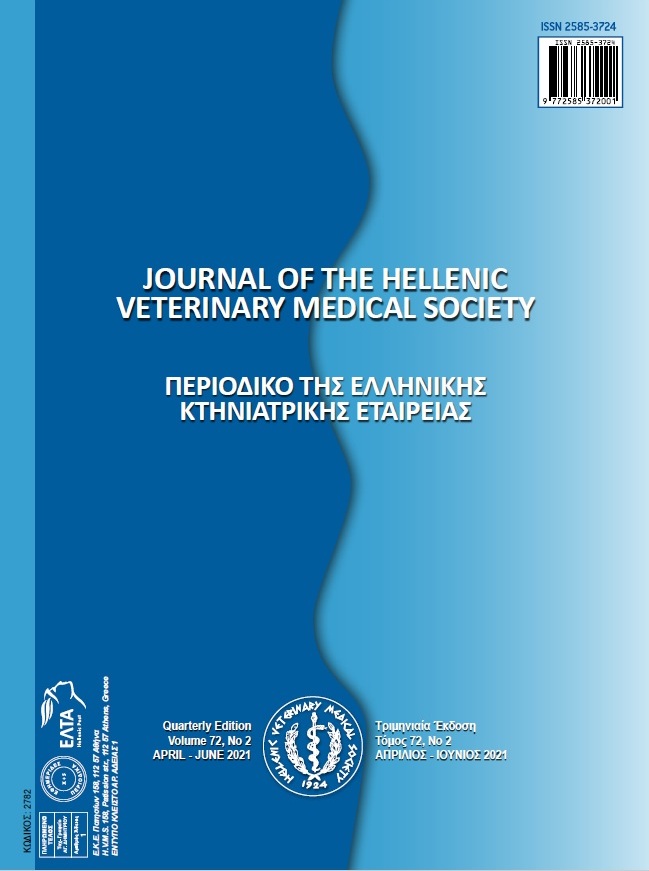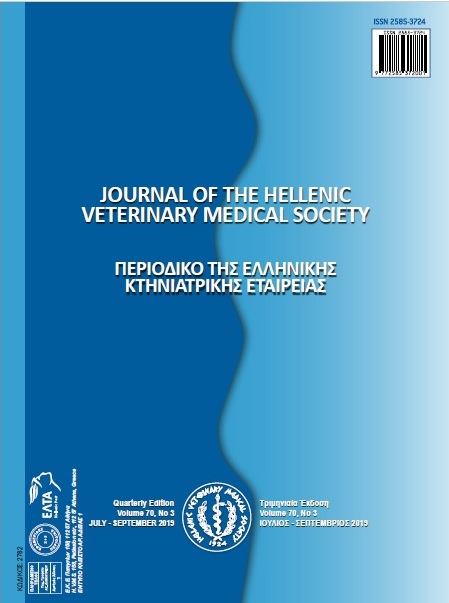Correlation of a quantitative and a semi-quantitative method for proteinuria detection in chronic kidney disease in dogs
Résumé
Proteinuria can arise in various physiologic and pathologic conditions. Persistent proteinuria without any abnormalities detected in urine sediment is indicative of chronic kidney disease and has great diagnostic value as it is used for the categorization of the patient on IRIS (International Renal Interest Society) staging system. There are several techniques for urine protein measurement including the semi-quantitative/qualitative (urine dipstick, sulfosalicylic acid turbidimetric test and Heller’s reaction test) and the quantitative tests (urine protein to creatinine ratio (UPC) and microalbuminuria assay).The purpose of this study was to correlate the semi-quantitative Heller’s reaction test for proteinuria detection, with the UPC in urine samples from 89 dogs with chronic kidney disease. The non-parametric Spearman’s correlation coefficient was used to correlate Heller’s reaction test with UPC in urine samples from dogs with chronic kidney disease in proteinuria detection. Correlation analysis revealed a statistically significant positive and moderate correlation between the Heller’s reaction test and UPC (r(89)=0.510, p<0.0001) which was slightly improved when USG>1010 (r(72)=0.541, p<0.0001)(urine specific gravity).Heller’s reaction test might be a useful alternative to detect proteinuria when UPC is not available in the clinical setting, however it cannot be used interchangeably with UPC for the IRIS sub-staging of chronic kidney disease (CKD).
Article Details
- Comment citer
-
BAKA, R., KOUTINAS, C., ATHANASIOU, L., & Polizopoulou, Z. (2021). Correlation of a quantitative and a semi-quantitative method for proteinuria detection in chronic kidney disease in dogs. Journal of the Hellenic Veterinary Medical Society, 72(2), 2897–2902. https://doi.org/10.12681/jhvms.27529
- Numéro
- Vol. 72 No 2 (2021)
- Rubrique
- Research Articles

Ce travail est disponible sous licence Creative Commons Attribution - Pas d’Utilisation Commerciale 4.0 International.
Authors who publish with this journal agree to the following terms:
· Authors retain copyright and grant the journal right of first publication with the work simultaneously licensed under a Creative Commons Attribution Non-Commercial License that allows others to share the work with an acknowledgement of the work's authorship and initial publication in this journal.
· Authors are able to enter into separate, additional contractual arrangements for the non-exclusive distribution of the journal's published version of the work (e.g. post it to an institutional repository or publish it in a book), with an acknowledgement of its initial publication in this journal.
· Authors are permitted and encouraged to post their work online (preferably in institutional repositories or on their website) prior to and during the submission process, as it can lead to productive exchanges, as well as earlier and greater citation of published work.




